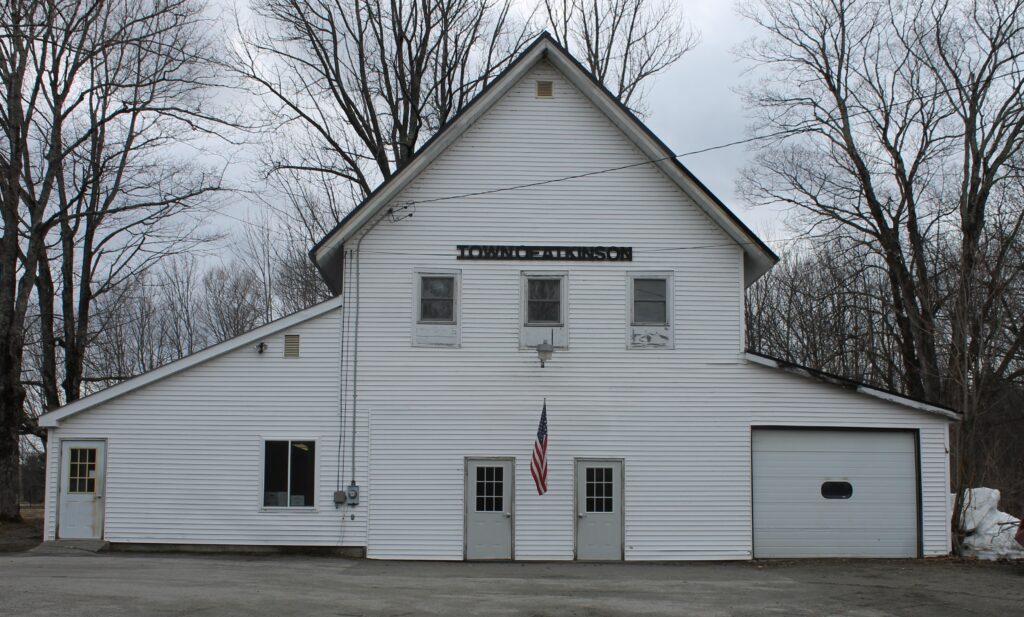
A guide to the years-long process it takes for a Maine town to deorganize
By Kasey Turman, Bangor Daily News Staff
As towns across Maine grapple with inflating budgets and fewer candidates and volunteers, they may consider disbanding.
At least three towns across Maine are having early conversations about deorganizing.
But deorganizing — the decision to formally dissolve a town and join Maine’s unorganized territory — is a 12-step process that can take up to two years to complete. Atkinson completed the process in 2019.
Here’s a guide to that process and what each step entails.
Step 1
The process begins with circulating a petition that can be taken out by a select board member or a resident. The petition requires the signatures of at least 50% of the population of registered voters in the previous gubernatorial election.
“This can be a grassroots event that happens from just the residents within the community, you know, so it’s a little bit different in those ways,” Harold Jones, fiscal administrator for the Unorganized Territory, said.
Step 2
If the petition gathers enough signatures, a meeting will be held for residents and town officials to talk about deorganizing, the reasons for doing so and the effects it will have on the municipality and residents. Following the meeting, residents will vote to continue the process or not.
If a majority of registered voters approve continuing with the process, they will then elect three voters to join a five-person Local Committee for the Deorganization of the municipality. The other two seats of the committee will be filled by a municipal officer nominated by the other officers and a school board member nominated by the other school board members.

FORMER TOWN OFFICE — The home of the Atkinson town office and fire station before the municipality completed the deorganization process in 2019.
Step 3
The committee will appoint a chair who notifies the fiscal administrator of the
unorganized territory and the executive director of the legislative council the results of the vote.
Step 4
Within 90 days, a deorganization procedure that includes creating plans for future education, completing a fiscal impact assessment, preparing a land-use map and inventorying roads and gathering information like population has to be completed by the committee.
This step is the longest because school budgets work in year cycles, Jones said.
“You have to flow through the entire year with the [school district] to give them time to recalculate, redo everything. It’s not like you can just take a contract and say you’d like to step out, we’re gone, because that puts a very hard burden on, you know, a community school system,” Jones said.
Step 5
The procedure is then sent to the State Commission on Municipal Deorganization who reviews it and returns any feasible alternatives to deorganizing, if they exist.
Step 6
A public hearing on the procedure is held.
Step 7
A special meeting and vote on the procedure will be called for after the public hearing. A majority of voters need to approve of the procedure for the deorganizing process to continue.
Step 8
The county commissioners will then call for an advisory referendum in the unorganized territory of the county for residents to vote if they support the municipality disbanding. The results will then be given to the State Commission.
Step 9
The commission will review the municipality’s procedure and send it to the State Legislature to be approved.
Step 10
The Legislature must approve the municipality’s procedure for disbanding.
Step 11
Residents in the town in the process of deorganizing will then vote in the next general election by secret ballot if the town should disband.
The vote requires two thirds of voters to approve the measure and at least 50% of the total number of votes cast in the previous gubernatorial election to pass.
Step 12
The final step is the tallying and declaration of votes.
If the process is voted down at any step, the municipality can’t submit another deorganiztion plan for another three years.
The process may be long and strenuous, but Jones said that’s because the state wants to make sure everything is settled before a town dissolves.
“This is not something that, generally speaking, is an easy process,” Jones said. “It can be very complex, but the reason for the complexity of it is to make sure that everything is done correctly.”